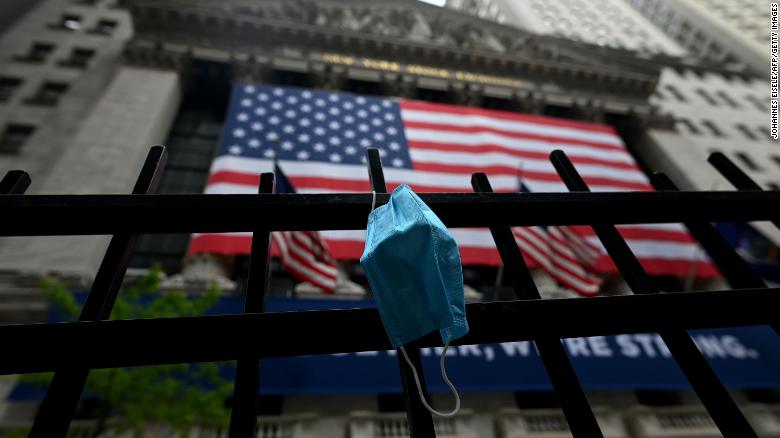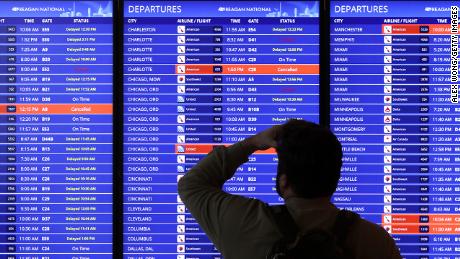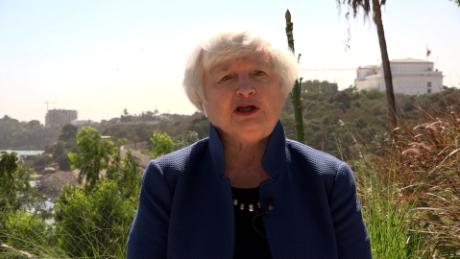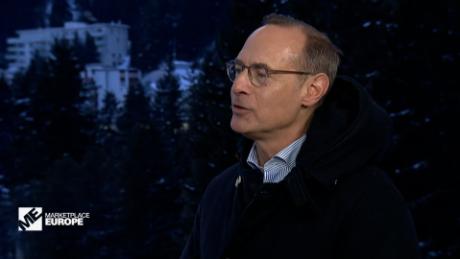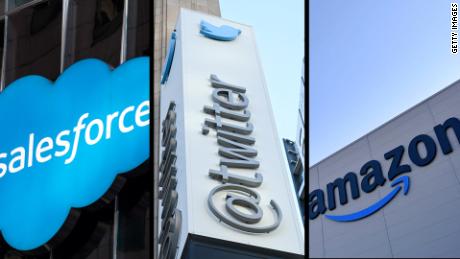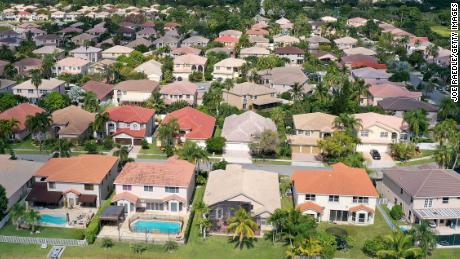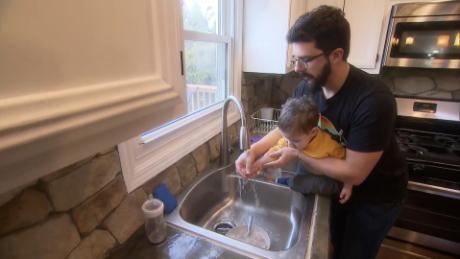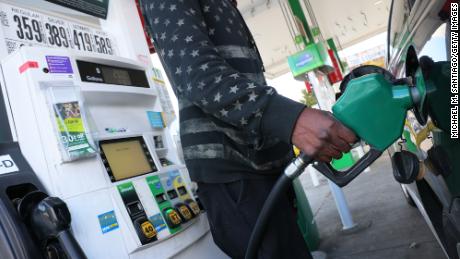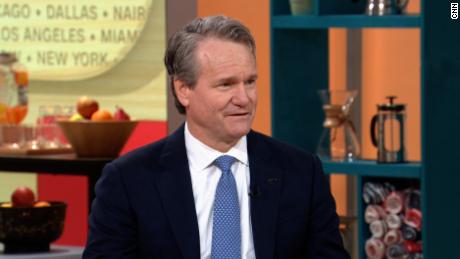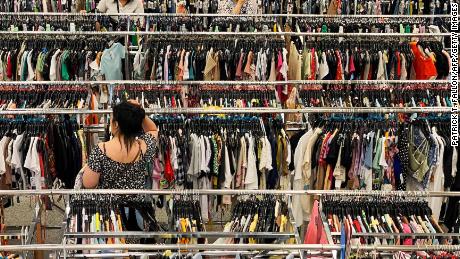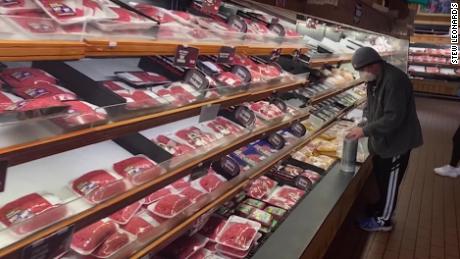New York/Hong Kong (CNN Business)Volatility has returned to the stock market, as the United States and China grapple with new coronavirus outbreaks.
While it's a sure sign that the pandemic isn't done wreaking havoc on the global economy, it also shows just how reliant on headlines stocks are at the moment.
It was a roller coaster day on Wall Street, where stocks opened sharply lower Monday morning before paring some of their losses. Trading continued to be volatile as the day dragged on, but all major stock indexes ended the day in the green.
The Dow (INDU) covered more than 1,000 points between its low and high points. The index closed up 0.6%, or 158 points.
Stocks have been climbing over the past weeks, driven up by hopes for the reopening of the economy. Now, the high equity valuations paired with negative headlines are a real hit to confidence, according to Seema Shah, chief strategist at Principal Global Investors.
But some news served to soothe investor concerns on Monday. The Federal Reserve finally launched its highly anticipated Main Street Lending Program, which is designed to help banks lend to small and medium-sized businesses hurt by the pandemic.
On top of that, the Fed announced it would start buying corporate bonds to support market liquidity and help large companies' availability of credit.
Investors have been waiting for what else Washington has up its sleeve in terms of monetary and fiscal stimulus. Last week Fed Chairman Jerome Powell said the central bank, as well as the government, might need to do more to help the economy through this crisis.
"With so much economic healing ahead of us and a still-uncertain path for Covid-19, the key question for investors is whether stocks are pricing in an overly optimistic scenario for the recovery in economic activity and corporate profits," said Jeff Buchbinder, equity strategist and Ryan Detrick, senior market strategist at LPL Financial, in an email.
Similar to equity markets, oil prices had been lower in the morning, pushed down by concerns that a virus resurgence could lead to lower demand. But prices recovered by midday. US oil futures settled up 2.4% at $37.12. Brent, the global oil benchmark, also pared losses and settled 2.6% higher at 39.72 per barrel.
The US economic calendar is light this week, but the New York Manufacturing Index report for June, released Monday morning, was surprisingly strong. Economists had expected another steep decline, but it was little changed from the the prior month. The manufacturing measure collapsed in April, during the height of the lockdown, but has recovered since.
European benchmarks finished the session lower, though they did recoup some earlier losses. The FTSE 100 (UKX) closed down 0.7% in London. Germany's DAX (DAX) ended down 0.3%, and France's CAC 40 (CAC40) fell 0.5%.
In Asia, markets also recorded steep declines after Beijing recorded a fresh cluster of the virus originating in the city's largest wholesale food market. The Chinese capital has recorded 79 new cases since a locally transmitted infection was reported last Friday for the first time in nearly two months.
China also reported concerning economic data, suggesting that the recovery in the world's second largest economy is progressing slowly.
Japan's Nikkei (N225) ended down 3.5%. South Korea's Kospi (KOSPI) lost 4.8%, closing out its worst day since March. Hong Kong's Hang Seng Index (HSI) fell 2.1%, and China's Shanghai Composite (SHCOMP) declined 1%.
Flare-up fears
For weeks, Wall Street appeared increasingly disconnected from the rest of the world ŌĆö big stock gains seemed incongruous with relatively high unemployment numbers and other data showing the economy is struggling. But markets have begun to catch up to reality, and despite a small recovery Friday, US indexes are on pace for heavy declines at the start of this week.
As much of the United States begins to reopen following coronavirus lockdowns, scientists and health experts are warning about the potential for a second wave of the virus, which could have devastating effects for the economy. Several US states that reopened weeks ago are now reporting a rising number of infections and hospitalizations.
A second wave could undermine the extreme optimism about the economy that had catapulted US stocks toward record highs. Investors worry that a rapid increase in cases could lead to delays in the reopening or possibly even another lockdown.
"Ultimately it's consumer's willingness to leave their apartments amid persistent social distancing ŌĆö either mandated by governments or by consumer behavior ŌĆö [that] will dictate the speed of the recovery," wrote Stephen Innes, chief global markets strategist at AxiCorp, in a research note. "But China's consumer-led recovery is not moving forward quickly by any stretch of the imagination."
In China, meanwhile, signs of another wave of the virus could compound an already sluggish economic recovery.
Industrial production, investment activity and retail sales improved somewhat from prior months, according to data released by China's National Bureau of Statistics on Monday. Still, the three readings all fell below forecasts from analysts polled by Refinitiv.
Even so, some economists pointed to positive signs. Activity in the country's services sector expanded for the first time this year, according to China's National Services Industry Manufacturing Index. The index measures the change in output of the services sector each month.
"Overall economic output returned above 2019 levels in May for the first time since the Covid-19 outbreak," Martin Rasmussen, China economist for Capital Economics, wrote in a research report. "We had previously thought that China's economy wouldn't return to positive year-on-year growth until [the third quarter]. But today's data suggest that this milestone may be reached this quarter."
ŌĆö Matt Egan contributed to this report.
